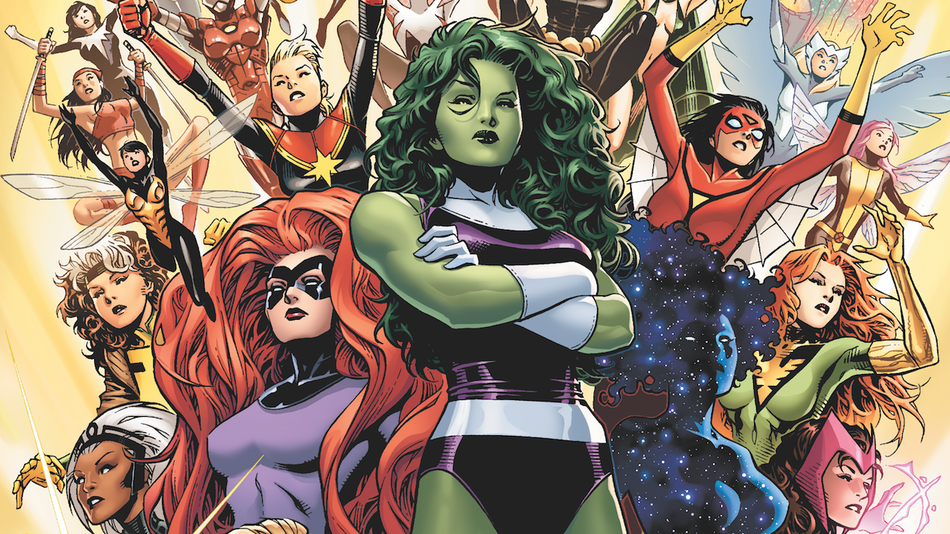Featured image source: Mashable
The comics industry started out in the early twentieth century at the back of magazines and newspapers. Comics since then has acquired a larger target market and reached its golden age where hundreds of comic issues and volumes have resided on the shelves or on a box under of every boy’s room. Superheroes like Batman, Superman and Thor graced the panels of each page with unbelievable powers and superhuman abilities that seemed impossible for a villain to win—and after each adventure, yet another woman was saved from a burning building, a kidnapping or as they were falling in mid-air.
A Man’s World
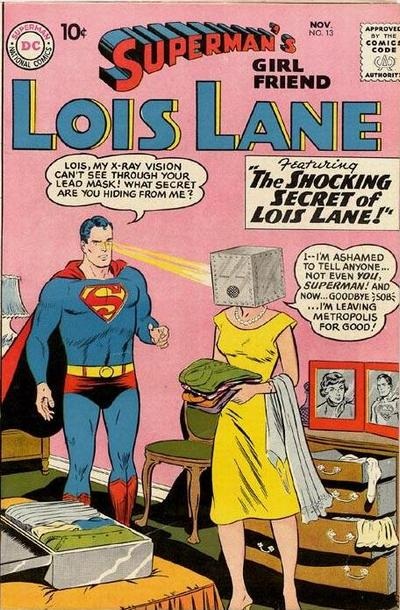
Much like western culture then, the comics industry was a “man’s world”, where women had little to no representation except for being the usual damsel in distress and the occasional love interest of the main male superhero. Up until some writers did create a comic book with a woman protagonist, the industry was already dominated by male superheroes depicting a muscular and an unfazed sense of masculinity that completely overshadowed the women.
During the 1940s, it was evident that despite a slow increase in the number of female-led comic books that targeted young female readers, it wasn’t enough. Some of these female heroes, ones that dated way before Wonder Woman, had stories that weren’t as progressive as the flagship male heroes of big comic book companies like DC and Marvel. The worse part of it all was, even before and during the Golden Age of comics and through its transition into the modern era, most of the female superheroes were reduced to becoming objects and pin-up posters in the hands of male writers and artists. Women were represented in the most conspicuous way possible: minimal clothing, impossibly small waistlines and on issue covers placed in suggestive positions.
Brave writers and artists, male and female, didn’t stop producing more female-led comic books, however. They have remained adamant to continue fighting for female representation in mainstream comics. It was a slow fight but there was progress nonetheless. Now, it seems that the comics’ male target demographic had been destroyed, by the writers who created these powerful female superheroes, who, not only became inspirations of women empowerment but became cultural icons alongsideother recognized heroes.
1.Kamala Khan – Ms. Marvel
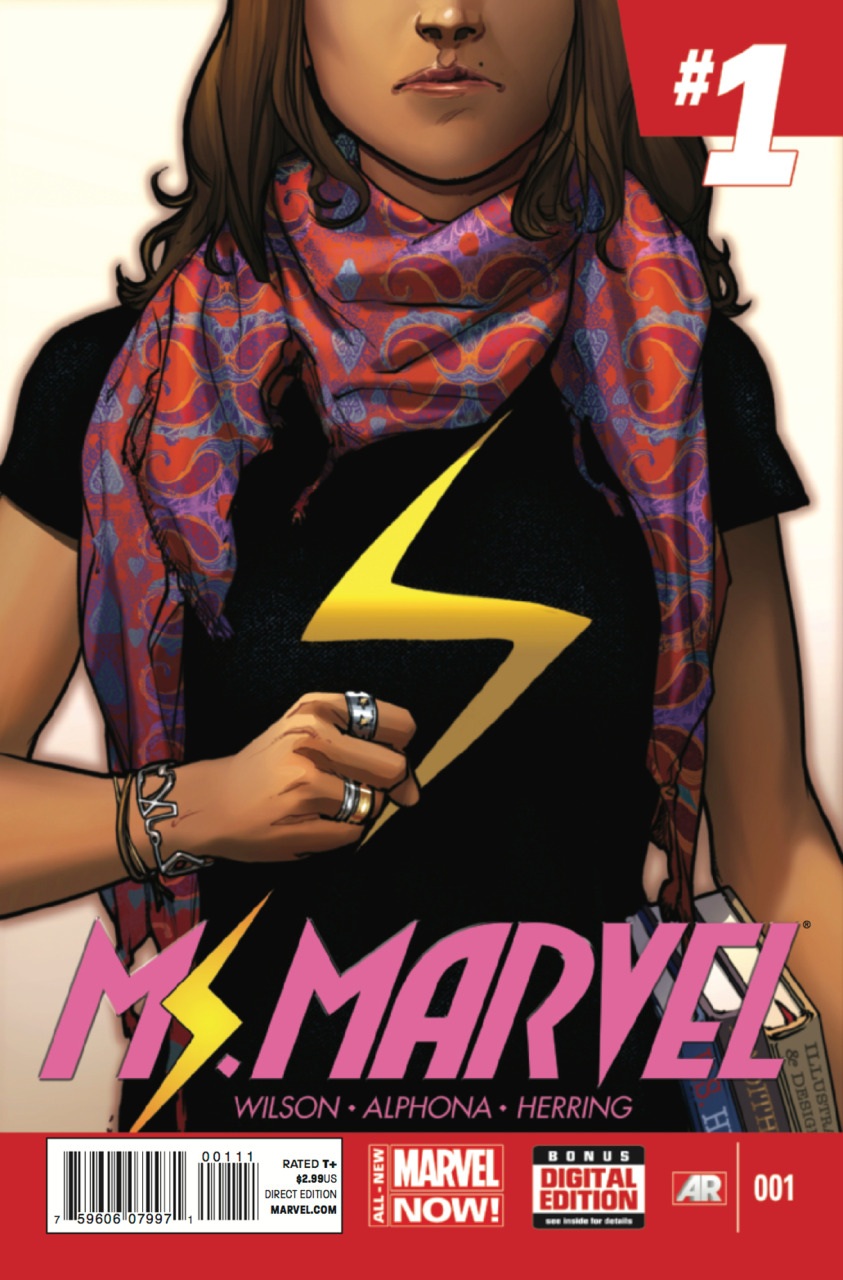
Kamala Khan is the youngest superhero among the empowered heroines on this list. She’s fairly new to the superhero scene and is both dealing with her superhero responsibilities and struggling with her teenage life. She acquires her powers after being exposed to the Terrigen Mist and took the name, Ms. Marvel, after the former name of one of her idols, Carol Danvers, who is now Captain Marvel.
Created in 2014 by women writers, Sana Amanat and G.Willow Wilson and artist Adrian Alphona for Marvel Comics, not only does Khan represent young, courageous girls as a superhero, she carries with pride her heritage and beliefs as a Muslim and beingthe first Muslim-American superhero. Her traits stem from her Islamic beliefs as well, which is portrayed in a positive way unlike how it’s shown in most entertainment mediums. The creators are bent on breaking down black and white stereotypes about the Muslim community and opening up opportunities for diverse representation in comics. Superheroes like her let those who feel marginalized see that they are also capable of brave acts of heroism and strength.
The writers of Ms. Marvel have yet to make more complex storylines of her journey as a superhero in training, but nowshe is a symbol of her faith and an inspiration to young, brave girls in the world.
-
Carol Danvers – Captain Marvel
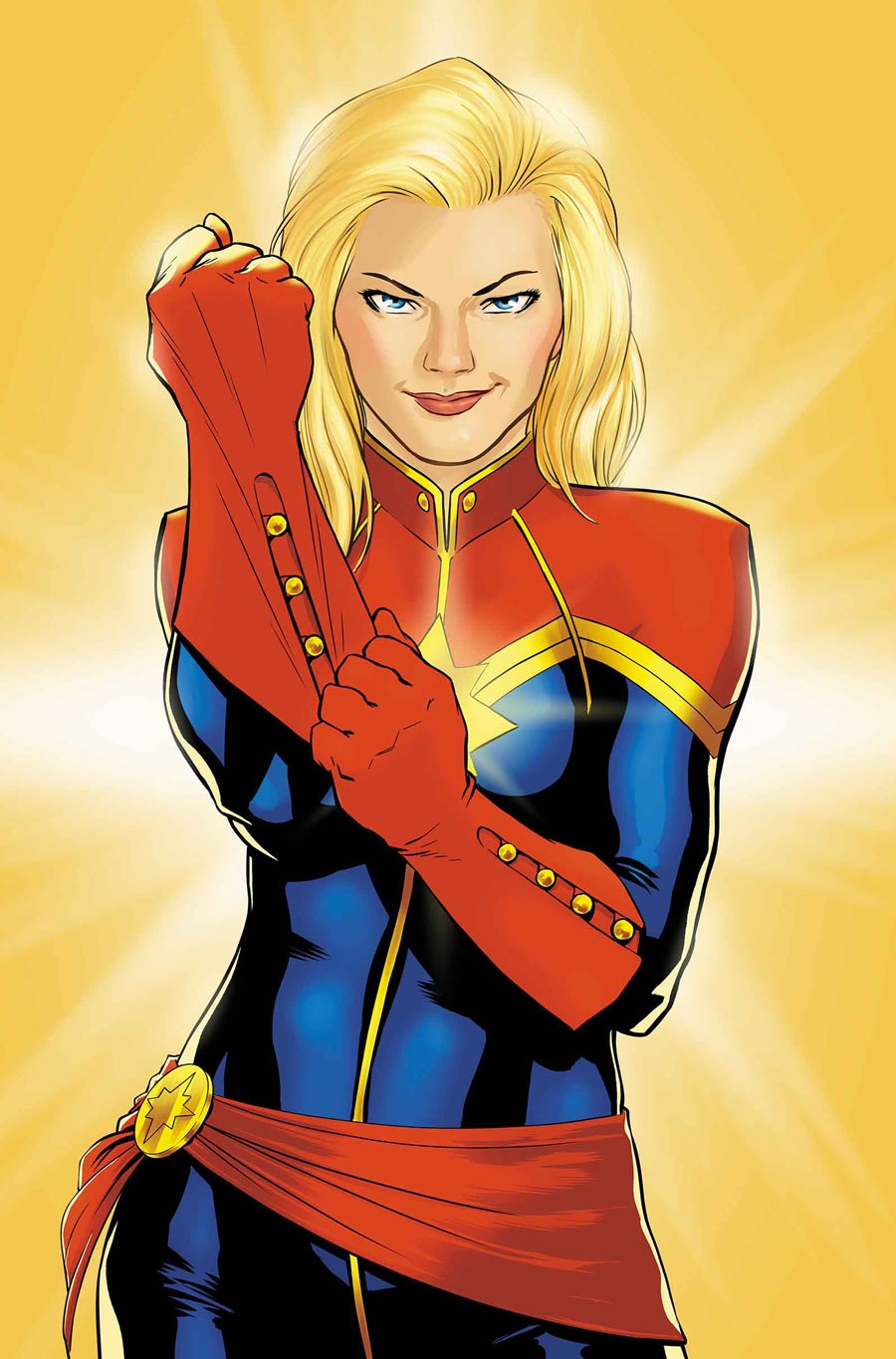
That’s right, she used to be Ms. Marvel, from whom Kamala Khan took the name from. Like most superhero origins in Marvel, Carol Danvers acquired her powers in an explosion with Mar-Vell, then Captain Marvel, who was shielding her from the explosion. The explosion caused a DNA fusion with Mar-Vell, which resulted in Danvers’ “accidental” powers.
Her entire journey from Ms. Marvel, Binary to Captain Marvel is an epitome of a woman’s rise from being a victim to an empowered woman—and this includes her strange character creationhistoryoff the pages of the comic books. She never had a starring role to begin with. Though she was a woman in power in her first appearance in Marvel’s Super-heroes no. 13, she was created as a love interest until another set of writers took her for a spin in her own comic book series, Ms. Marvel. This time, she had mediocre origins and powers. But things were changing for her during this transition of her storyline, she was starting to show that she was capable of much more than what other characters, like the Avengers, told her she can do. Her image as a superhero among readers at this point wasn’t as prominent as it is now, but the writers are finally giving her the chance to be ambitious and vigorous in her cause to help the world. She claimed the name “Captain Marvel” through female writer Kelly Sue DeConnick, who received feminist praise when she corrected Danvers’ mishandled origins, earning a Carol Danvers fandom called, “Carol Corps”.
There’s nothing more empowering to a woman reading and understanding her origins than a superhero who refused to be held hostage to the woman stereotype in comics.
-
Selina Kyle – Catwoman

Initially, Selina Kyle or Catwoman was one of Batman’s first villains, appearing in Batman #1 back in 1940. Like Batman, she only had her own strength and wit that she used to survive the streets of Gotham. Like Danvers, her comic creations started out for her to be the occasional love interest for Batman, while still being a menace to the city. Throughout the years, however, writers of Catwoman began teasing her good side, where she would be shown to occasionally help Batman in his dark adventures. Though she was not a full-on superhero, she was, however, an antihero of sorts.
What made her an example of claiming your own woman power,is that she claimed her sexuality and accepted that this is her own strength, and in the comics, she uses this against men who only see her as an object.
Despite her now feminist storyline, her character was a victim of early comics stereotyping. She was recreated time and time again by male artists in the covers of comic books in highly provocative poses and drawn in unrealistic and outrageous outfits. However, over the years, her evolution led to Kyle flipping the script on her own image. She was alluring yet devious, and she uses that often against her adversaries. She proved to be wise and tactical, which, over time, had caught the eye of Batman and in recent comics, Batman considers her as his equal.
Her tragic comic origins also support her claim to her own feminine power as she transforms from just Selina Kyle to Catwoman. She grew up and lived by herself on the dangerous streets of Gotham as an orphan and knew as a young girl that she could only rely on herself for her survival.
She was a woman who knew she didn’t need a man to save her.
4. Ororo Munroe – Storm from the X-Men

Ororo Munroe, better known as Storm, wasn’t only a superhero, she was a leader. A powerful one at that, as she can manipulate elemental forces that involve the weather and other atmospheric phenomena. By birth, her origins take her to be the rightful heir of her family’s hidden kingdom in the Great Rift Valley of Africa and she once became Queen of Wakanda and soon a reliable leader of the X-Men. Storm has the heart of a leader and she represents a strong woman of color in comics.
Storm was created to play a prominent role in the X-Men as she first appeared on Giant Size X-Men # 1 in 1975, which was a fresh and less stereotyped origin than the other heroes on this list. But at the time of her appearance, women of color in comics were still few, which is why, Storm became a driving inspiration to represent her African roots and other women of color in the comics industry. Over the years, Storm became a strong princess, queen and a leader of the mutantkind. The X-Men, her mutant peers and her students relied on her wisdom, and the world relied on the goodness of her heart. She knows the responsibility tied with an overwhelming power like hers and she remained unwavering in her pursuit to help the world, even as the odds are pitted against her.
She was a woman of strength as she was a woman for others.
-
Diana Prince – Wonder Woman
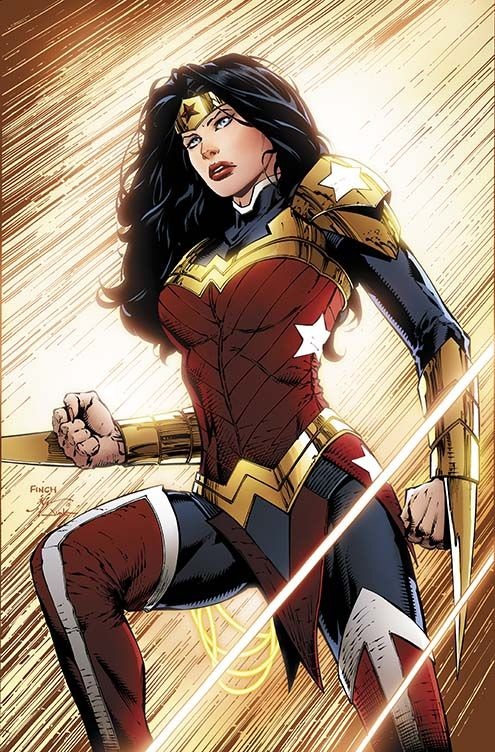
Wonder Woman didn’t become just a name. “Wonder Woman” became a label for any woman who has strength and a fearless soul. Diana Prince, as her peers and readers know her by, was the quintessential female hero. Despite a number of origin stories, one thing will never change about her: she has always been the strongest Amazon princess who grew up in Themyscira, a mythical land only occupied by the strongest women warriors in the DC Universe’s Earth. She appears in All-Star Comics #8 in 1941,where she is blessed with abilities as giftsfrom the Greek gods that makes her a match for even the likes of Superman and Shazam. These abilities are coupled with her formidable training as an Amazon, with close-combat and weapon skills with famously the Lasso of Truth that is almost unmatched.
She’s a part of the DC Universe Holy Trinity, alongside Batman and Superman—if not in the middle of them both.The 1940s for female comic book superheroes were a difficult time for them to shine. But Wonder Woman became a beacon of hope for writers wanting to create superheroes to aid in the fight for female representation. For decades, Wonder Woman’s origins and creator, Professor William Marston, the inventor of the lie detector test, has been shrouded in mystery and controversy. However, Marston still believed in the necessity of his creation to enforce a feminist ideal that women are not inferior to men in any way.
Diana evolved and transitioned into several roles ranging from superhero to fashion icon, depending on the writer handling her. She was not an exception to objectification by male artists as well. Soon after the industry has recognized the error in suppressing female representation in comic books, Diana was a singular character with complex storylines and trials that allow readers an intimate scope about her struggles in always upholding the truth. But most prominently, she was ultimately portrayed as an indomitable leader of the Justice League and the strongest female superhero in the DC Universe.
Until now, Diana Prince is a cultural icon. But “Wonder Woman” is the embodiment of the empowered woman of the fictional genre.
Women are still rallying for female representation in mainstream media, but in the comic industry, these superheroes are proof of victory for every woman.

